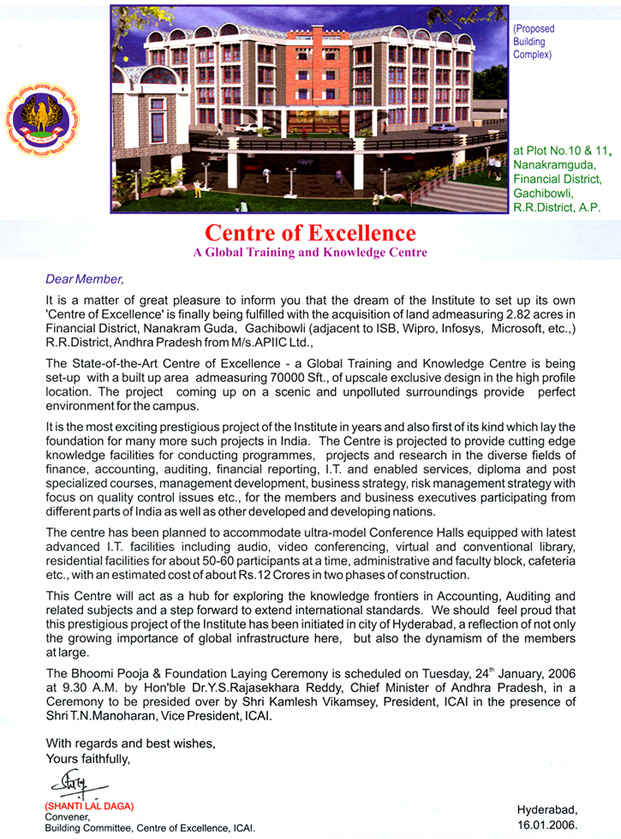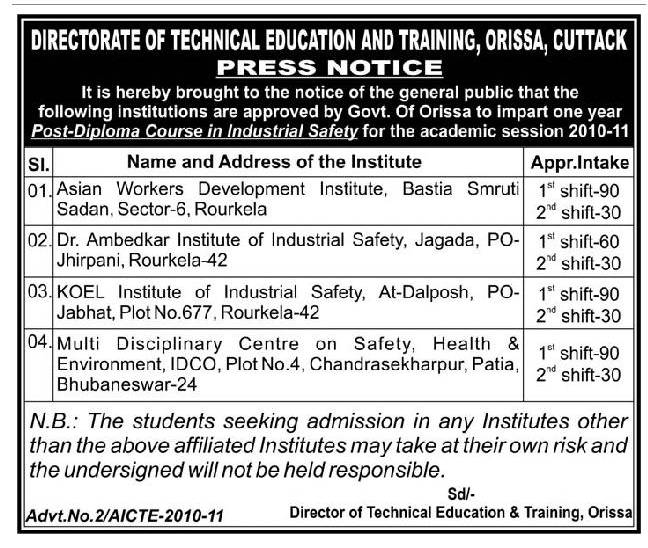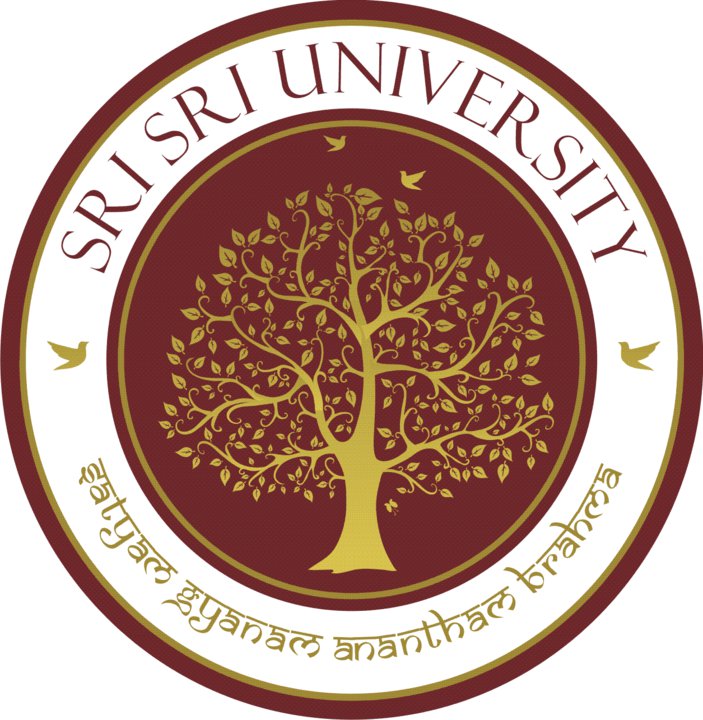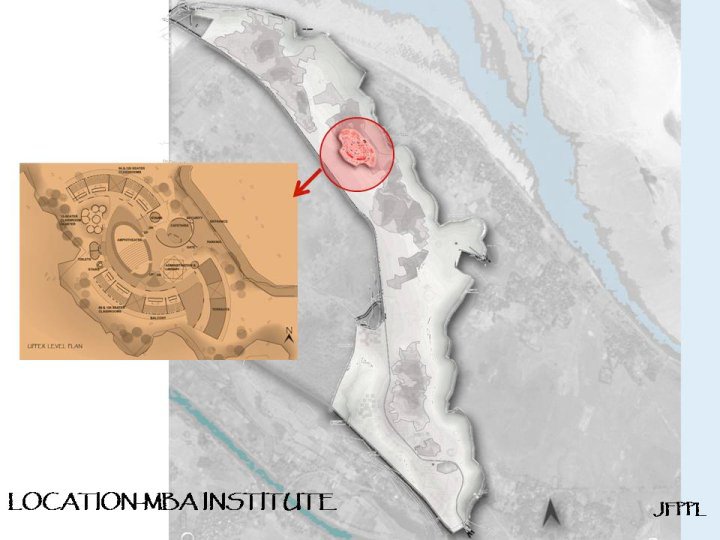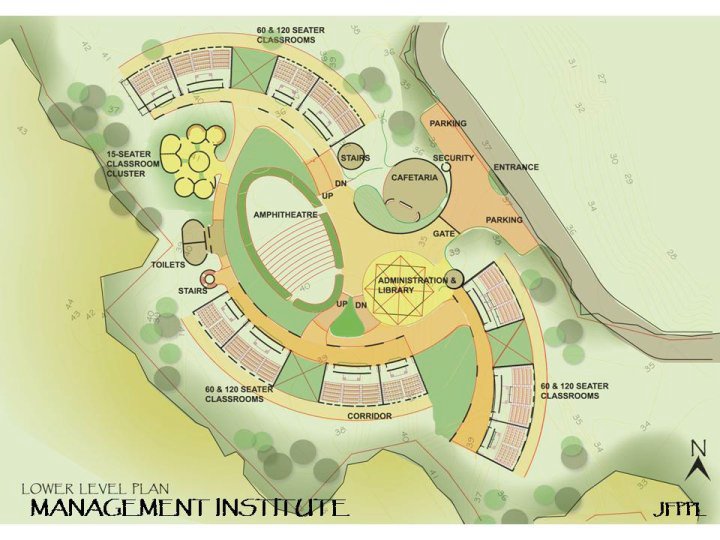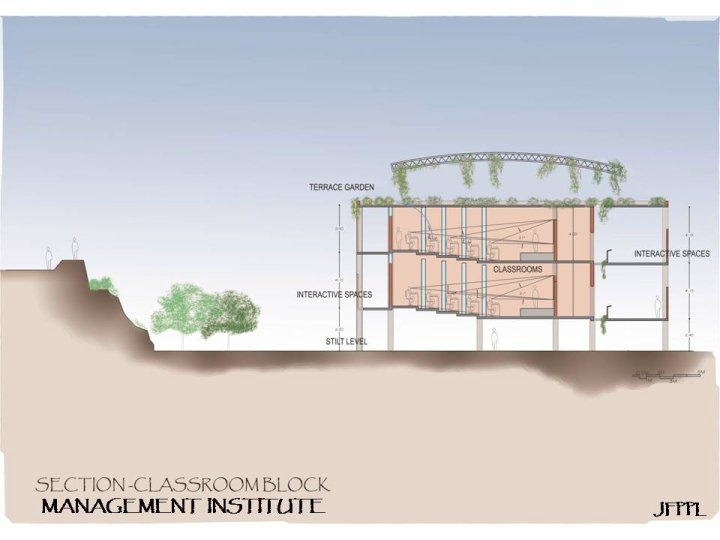Following is from Section 2 of the report by the 2009 committee which reviewed the then deemed universities and divided them to three categories; the second category (which included KIIT University Bhubaneswar) of universities were found somewhat deficient and given time to correct the deficiency and the third category (which included SOA University Bhubaneswar) were found deficient and it was recommended that the deemed tag may be taken away from them.
The committee consisted of Prof. P. N. Tandon, Prof. Goverdhan Mehta, Prof. M. Anandakrishnan, Prof. Mrinal Miri and Shri Sunil Kumar (Convenor).
Universities are institutions that are meant to sustain human practices and activities of a very special kind. They are, of course, concerned centrally with higher education and research, but their concern in these fields is very different from that of other institutions of higher learning and research which are devoted to imparting knowledge and skills that are essential to competent and creative pursuit of what might be called ‘technical professions’. Examples of such professions are: different branches of engineering, various aspects of medicine and surgery, and, in our times – because of the rise of corporations and bureaucratic governance -management and control of humans. It may be suggested, without much fear of contradiction, that the primary value of the kind of knowledge and skills imparted by such institutions resides in their utility – utility in creating an infrastructure for the physical wellbeing of the general public, utility in sustaining good health of individuals and the community, utility in enhancing the profit margins of corporations, and of course utility in terms of their own marketability. However, the very best of such institutions have shown the capacity to transcend utility, and this often has the effect of transforming the very quality of education they impart.
While universities are not entirely free from utility-driven higher education and learning, their core aim – if one may be allowed to say so – is very different. Universities are meant to be places -which facilitate and promote critical intellectual engagement with: (a) different traditions of thought and its great variety of expression, (b) modes of understanding the human condition and predicament, (c) the incredibly diverse inanimate and non-human living world. Such engagement obviously has many utilitarian and extrinsic values; but it is its intrinsic value that marks it off as a very special sort of human practice. It requires the development of a form of attention that focuses -beyond the interests of the self and its preoccupations with itself – on the other whether the other is a tradition of thought, or a particular human collectivity and its specific way of being human, or the physical world and its amazing intricacies, or the magieal variety of non-human life.
Such attention is valuable in itself not only because it entails the exercise of virtues such as honesty, courage and fairness, but, more importantly because these virtues must find a unity within the overarching virtue of care (some might even say, love). Care such as this requires the presence of the person – the whole ‘person – to the other, to the object of care. To be wholly present to the other in this way, is for the person to become more as a person. It enhances the human person as a person. The intrinsic value of university education lies ultimately in its inherent capacity to induce such enhancement of the person in us.
This is the truth of the commonly held belief that a truly educated person is larger as a person than an uneducated person. It is of course also true that a person may have gone through the process of education, including university education, and remained uneducated. Education has failed to make the difference in the latter instance which it is meant to have made. Some of the natural outcomes of such caring and critical attention and engagement are: traditions of thought and research are carried forward, creativity finds a central place, new modes of understanding and explanation emerge, just as new objects of such attention begin to loom on the horizon. These indeed are the intrinsic rewards of the practices sustained by a University. Think of the humanities, (which, as a result of the practicalities of the division of academic labour are split into "disciplines" such as literature, the arts, philosophy, history etc.); the human sciences (economics, psychology, anthropology, sociology and so on); the physical sciences including mathematics, the life sciences and exciting new areas of enquiry in them – think of them and the role of the Universities in taking them forward, in devising new modes of enquiry and uncovering fresh objects of study and thought.
It is important at this point to remind ourselves of what the Radhakrishnan Commission of Education 1948 had to say on the question of setting up of new universities – "….There are certain fundamental characteristics which should be inherent in any institution which is to call itself a university …It should be a place for providing a student with opportunity for all round well proportioned education for effective living and for citizenship, in addition to preparation for a calling. It may occur that a university shall develop special strength in some particular field, as in engineering or industrial development or in teacher-training or inforestry or fisheries. In fact, since no institution can be excellent in everything, it is desirable that areas of special strength be developed at least in all but perhaps the largest of our universities. However, these areas of special strength should be in addition to facilities for all round higher educqtion, and should not be a substitute for such facilities. Unless an institution aims at providing such all round training it should continue as a technical institute and should not aspire to be a university… Institutions doing perfunctory or mediocre work should not be dignified by university status."
Thus, what is crucial is that universities must not, in their various pursuits, lose sight of this essential concept of a university. There is, sadly, much truth in the general belief that many of our universities have willy-nilly lost sight of this idea. This has resulted in a certain debasement of the very concept of a university allowing institutions with little claim to the status of a university to aspire for such status.
November 27th, 2010
Update 5: The companies act of 1956 is at http://www.vakilno1.com/bareacts/companiesact/companiesacts.htm.
Update 4: The land acquisition act is given at http://dolr.nic.in/hyperlink/acq.htm. Following are the excerpts on the whole section on land acquisition for companies, including Section 40 referred below.
PART VII
Acquisition of Land for Companies
38. [Company may be authorized to enter and survey]. Rep. by the Land Acquisition (Amendment) Act, 1984 (68 of 1984), s.21.
[38A. Industrial concern to be deemed Company for certain purposes. – An industrial concern, ordinarily employing not less than one hundred workmen owned by an individual or by an association of individuals and not being a Company, desiring to acquire land for the erection of dwelling houses for workmen employed by the concern or for the provision of amenities directly connected therewith shall, so far as concerns the acquisition of such land, be deemed to be a Company for the purposes of this Part, and the references to Company in [selections 4, 5A, 6, 7 and 50] shall be interpreted as references also to such concern]
39. Previous consent of appropriate Government and execution of agreement necessary. – The provisions of [sections 6 to 16 (both inclusive) and sections 18 to 37 (both inclusive)] shall not be put in force in order to acquire land for any company [under this Part], unless with the previous consent of the [appropriate Government], not unless the Company shall have executed the agreement hereinafter mentioned.
40. Previous enquiry. – (1) Such consent shall not be given unless the [appropriate Government] be satisfied. [either on the report of the Collector under section 5A, sub-section (2), or] by an enquiry held as hereinafter provided, –
[(a) that the purpose of the acquisition is to obtain land for the erection of dwelling houses for workmen employed by the Company or for the provision of amenities directly connected therewith, or
[(aa) that such acquisition is needed for the construction of some building or work for a Company which is engaged or is taking steps for engaging itself in any industry or work which is for a public purpose, or]
(b) that such acquisition is needed for the construction of some work, and that such work is likely to prove useful to the public].
(2) Such enquiry shall be held by such officer and at such time and place as the [appropriate Government] shall appoint.
(3) Such officer may summon and enforce the attendance of witnesses and compel the production of documents by the same means and, as far as possible, in the same manner as is provided by the [Code of Civil Procedure, 1908 (5 of 1908)] in the case of a Civil Court.
41. Agreement with appropriate Government. – If the [appropriate Government] is satisfied [after considering the report, if any, of the Collector under section 5A, sub-section (2), or on the report of the officer making an inquiry under section 40] that [the proposed acquisition is for any of the purposes referred to in clause (a) or clause (aa) or clause (b) of sub-section (1) of section 40], it shall require the Company to enter into an agreement [with the [appropriate Government]], providing to the satisfaction of the [appropriate Government] for the following matters, namely :-
(1) the – [payment to the [appropriate Government]] of the cost of the acquisition;
(2) the transfer, on such payment, of the land to the Company.
(3) the terms on which the land shall be held by the Company,
[(4) where the acquisition is for the purpose of erecting dwelling houses or the provision of amenities connected therewith, the time within which, the conditions on which and the manner in which the dwelling houses or amenities shall be erected or provided;
[(4A) where the acquisition is for the construction of any building or work for a Company which is engaged or is taking steps for engaging itself in any industry or work which is for a public purpose, the time within which, and the conditions on which, the building or work shall be constructed or executed; and]
(5) where the acquisition is for the construction of any other work, the time within which and the conditions on which the work shall be executed and maintained and the terms on which the public shall be entitled to use the work.]
42. Publication of agreement. – Every such agreement shall, as soon as may be after its execution, be published in the official Gazette, and shall thereupon (so far as regards the terms on which the public shall be entitled to use the work) have the same effect as if it had formed part of this Act.
43. Section 39 to 42 not to apply where Government bound by agreement to provide land for Companies. – The provisions of sections 39 to 42, both inclusive, shall not apply and the corresponding sections of Land Acquisition Act, 1870 (10 of 1870), shall be deemed never to have applied, to the acquisition of land for any Railway or other Company, for the purposes of which, [under any agreement with such Company, the secretary of State for India in Council, the Secretary of State, [the Central Government or any State Government] is or was bound to provide land].
44. How agreement with Railway Company may be proved. – In the case of the acquisition of land for the purpose of a Railway Company, the existence of such an agreement as is mentioned in section 43 may be proved by the production of a printed copy thereof purporting to be printed by order of Government.
[44A. Restriction on transfer, etc. – No Company for which any land is acquired under this Part shall be entitled to transfer the said land or any part thereof by sale, mortgage, gift, lease or otherwise except with the previous sanction of the appropriate Government.
44B. Land not to be acquired under this Part except for certain purpose for private companies other than Government companies. – Notwithstanding anything contained in this Act, no land shall be acquired under this Part, except for the purpose mentioned in clause (a) of sub-section (1) of section 40, for a private company, which is not a Government company.
Explanation. – "Private company" and "Government company" shall have the meaning respectively assigned to them in the Companies Act, 1956 (1 of 1956).]
Update 3: Following are excerpts from a report in Pioneer.
The dispute was over whether the Anil Agarwal Foundation is a private company or a public company in terms of the provisions of the Companies Act, 1956. The Court held that the acquisition of land in favour of the Foundation is not permissible, except for some limited purposes enumerated under Section 40(1)(a) of the Land Acquisition Act, since it is a private company.
The Chief Minister, however, countered the Court’s stand by stating, “In this connection I may point out that acquisition was never made under this aforesaid provision but under Section 40(1) (aa) or 40 (l) (b) for a public purpose, the acquisition being for the purpose of setting up a university… As the Government has accepted, based on the records, that the Foundation is a Public Company, land acquisition for an educational purpose like for the proposed world class university would be permissible under the Land Acquisition Act, 1894.”
Replying to the court’s observation that the Ordinance promulgated by the State Government in favour of the Foundation cannot give the legal status to the university proposed to be established in the acquired land by the Foundation, Patnaik observed, “The reference to the Ordinance is baffling and is an error apparent on the face of record. The fact is that no Ordinance has ever been promulgated by the Government for establishing the proposed Vedanta University. Under the UGC Regulations, 2003 a university can be set up by an Act of Parliament or State Legislature by a Section 25 Company or a Trust or a Registered Society. The promoter of the proposed University, the Foundation is a “not for profit” Company registered under Section 25 of the Companies Act”.
The Chief Minister further clarified that the Assembly has already passed a Bill in July, 2009 for setting up the Vedanta University with an aim to provide education of global standards in the State. The Bill is presently awaiting the assent of the Governor.
The High Court had also observed that acquiring land in which two rivers are flowing, and requiring the company to maintain the flow of these rivers, would affect the residents of the area. The Chief Minister contended that no land comprising the rivers, channels or embankment would be transferred to the university.
“There is also no proposal to alienate the water channels in favour of the proposed university and the ownership, possession and right of use of channel will continue with Water Resources Department, and hence will serve the interest of the public at large”, he claimed.
Update 2: Following are excerpts from an IANS report in sify.com.
‘The setting up a world class university in Orissa is most certainly in the larger public interest and his government had acted in a bonafide manner throughout the process,’ Patnaik told the assembly in response to an adjournment motion.
… Responding to the questions raised by some opposition members during the debate, Patnaik also reiterated that as per the records available with the government, the foundation had satisfied all the norms for converting itself from a private to public company.
Update 1: Following are excerpts from a report in Business Standard.
Chief Minister Naveen Patnaik has shot back at the Opposition, refuting all allegations regarding land acquisition for the proposed Vedanta University Project.
Responding to the adjournment motion on the issue moved by the Congress MLA Prasad Harichandan, Patnaik clarified that land acquisition for the project was not illegal.
… Giving his initial response to the motion, the chief minister said,"After receipt of intimation of the Anil Agarwal Foundation about the change of its status from a private to a public limited company, notification was issued under Sub-Section 1 of Section 4 of the Land Acquisition Act in respect of 7184.37 acres of land which was subsequently reduced to 6137.90 acres. Acquisition has since been made in respect of 3495.21 acres of private land while government land to the extent of 509.27 acres has also been leased out to the Foundation”.
Referring to the High Court verdict on the issue, he said, “The High Court has held that the Anil Agarwal Foundation is a private company and not a public company in terms of provisions of the Companies Act, 1956. Therefore, it has held that the acquisition of land in favour of the Foundation is not permissible except for some limited purposes enumerated under Section 40 (1) (a) of the Land Acquisition Act. In this connection, I may point out that acquisition was never made under this aforesaid provision but under Section 40 (1) (a) (a) or 40 (1(b) for a public purpose, the acquisition being for the purpose of setting up a university.”
He further clarified that the Anil Agarwal Foundation had confirmed to the state government regarding the change of its status from a private to a public company with effect from November 23, 2006 by a resolution of the Extraordinary General Meeting pursuant to the approval of the regional director, Department of Company Affairs.
"The company subsequently produced a letter dated February 21, 2007 from D K Gupta, Registrar of Companies to its address stating that the company has complied with the provisions of requirements of Section 25 of the Companies’ Act and accordingly, the status of the company has been changed from a private company to a public limited company. A copy of this letter has also been filed before the High Court by the Foundation on June 20, 2008”, he added.
Patnaik also clarified that there has been no violation of Section 16 (2) of the Shri Jagannath Temple Act.
"So far as the acquisition of land from the Lord Jagannath Temple is concerned, about 606 acres spread over nine villages has been acquired under the Land Acquisition Act. There is no violation of Section 16 (2) of the Shri Jagannath Temple Act by such acquisition as the above section mentions about previous sanction of the state government for lease, mortgage, sale and alienation of land belonging to Lord Jagannath and would not, therefore, apply to the acquisition of land under the provisions of the Land Acquisition Act”, he added. …
Following is an excerpt from a report in DNA.
Indicating that the Orissa government might challenge the high court judgement on Vedanta University in the Supreme Court, chief minister Naveen Patnaik today claimed that there was no violation of law during land acquisition for the proposed project in Puri district.
"The period of challenging the order of the high court has not yet expired. The advocate general has been requested to advise the government on the subject, after which appropriate steps will be taken in accordance with the law," he said in a statement on an adjournment motion moved by Congress chief whip Prasad Harichandan on the issue.
… The court, in its November 16 judgement, stated that the acquisition process by the state government for a private limited company was not legal.
The chief minister, however, said, "We started land acquisition process after receipt of intimation from Anil Agarwal Foundation about the change of its status from a private to a public limited company."
Claiming that the state government had not violated law of the land, Patnaik said that land was acquired for public purpose.
"I would like to point out that the Foundation had submitted a letter dated 22, November, 2006 issued by VS Rao, regional director, ministry of company affairs, Mumbai to its address, stating that their request for permission under section 25(8) of the Companies’ Act has been considered for conversion of status of the company from private company, and that the provision of section 23, 31, 189 (2) and 192 of the Companies Act are required to be compiled with," Patnaik said.
However, a representative of the Registrar of Companies, Mumbai in its affidavit before the high court on October 15, 2008 stated that though the Registrar considered the change of status from private to public limited company, it did not furnish a certified true copy of the altered memorandum and articles of association.
The company affidavit also stated that the company had less than 7 members, the minimum requirement of a public company.
"This stand is at variance from the contents of the letter dated 21-2-2007 reportedly issued by the Registrar of the company. In view of the apparent contradiction, this matter will be examined further and appropriate steps will be taken as per law," Patnaik said.
Patnaik also rejected other factors that the varsity project would affect the Konark-Balukhand Sanctuary, violation of environment act, forest act and others.
Admitting that about 600 acre of land belonging to Jagannath Temple was acquired for the purpose, the chief minister said: "The high court has not passed any order with regard to the acquisition of the Jagannath Temple land."
Patnaik also cited recommendation of a House Committee that had earlier recommended for disposal of temple land to augment the resources of the temple. "By present acquisition for the proposed university, Rs8.80 crore have been received by the temple administration," he said.
Stating that a world-class university was required for the state, Patnaik said Vedanta Group had selected Puri after looking for different places in Rajasthan, Gujarat, Andhra Pradesh and West Bengal.
It is great to read that the CM understands the importance of Vedanta University. He has taken a huge risk to his political career in supporting this. It is time we take action in support of this. Stay tuned for our action plan.
November 25th, 2010
Following is from http://iitbbs.gov.in/iit_news_events_details.php?id=15&type=scroll.
IIT Bhubaneswar invites applications from Indian nationals who are exceptionally bright and motivated, with an established record of independent, high quality research and commitment to teaching for position of Professors for its new School of Earth, Ocean and Climate Sciences (SEOCS) on direct recruitment / contract / by transfer on deputation basis with provision for absorption.
The prime responsibility of the Professor so recruited would be to set up the School of Earth, Ocean and Climatic Sciences and the Innovation Centre for climate changes. Besides setting up of the School, his / her other responsibilities would, inter alia, include, the following activities:-
1. To play a leading role in the proposed school of Earth, Ocean and Climate Sciences in IIT Bhubaneswar and steering it towards achieving excellence in research and education.
2. To develop R&D Programme relevant to the needs of the proposed school and other organization in the related areas.
3. To develop and participate in the academic programmes of the Institute and co-ordinate research programmes funded by various agencies in the related areas.
4. To initiate and develop student awareness programmes relevant to the needs of Earth, Ocean, and climatic Sciences (SEOCS) in the country in general and in the state of Odisha in particular.
ESSENTIAL QUALIFICATION & EXPERIENCE: – The candidate must have a Ph.D or equivalent degree in Earth System Sciences (Geology, Geophysics, Atmospheric or Oceanic Sciences) with consistent good academic record. He/She must be holding a regular position of Professor in a national Institute of repute with at least 15 years research experience in any branch of Earth System Sciences.
Desirable: – Proven experience of administrative capabilities as Head of the Department / Centre / Programme for at least a period of 2 years. He/She must have successfully handled sponsored / Consultancy R&D projects and be able to interact nationally and internationally in the inter disciplinary areas of Earth System Sciences.
No. of Post: 1(one) UNRESERVED
Scale of Pay :-
Position
Pay Band
Minimum Pay in the Pay Band
Academic Grade Pay
Professor
PB:4 Rs.37,400-Rs. 67,000/-
Rs. 48,000/-
Rs. 10,500/-
Pay Protection is admissible for Professors drawing salary at a higher stage including HAG Scale. In addition to above pay, allowances and other facilities including medical facilities, LTC etc would be same as approved by the Govt of India for IITs.
1. A cumulative Professional Development Allowance of Rs. 3 Lakhs for every block period of 3 years on reimbursement basis to meet the expenses for attending international/national conferences, paying membership fees of professional bodies, covering book grant, paying telephone charges and meeting contingent expenses etc. as per Institute guidelines.
OTHER INCENTIVES
2. Reimbursement of relocation charges at the time of joining up to a ceiling of Rs. 90,000/- as per Institute norm.
3. Honorarium of Rs. 15, 000/- per month to the faculty members who have obtained Bhatnagar Award OR are Fellows of at least two National Academies. A faculty member is entitled for only one honorarium.
In the event of a Professor who is under Pension Scheme in any Central/State Government funded Pensionable establishment, the Institute would pay his leave salary and pension contribution as per rate prescribed by the Govt of India for the period of deputation. The period of deputation would be ordinarily for a period of five years with provision for absorption subject to satisfactory performance.
Terms & Conditions for appointment on transfer on deputation
Candidate possessing the requisite qualification and experience may submit their application in the prescribed proforma either a hard copy or by E-mail to the Registrar, IIT Bhubaneswar, Samanatapuri , Bhubaneswar-751013, India (E-mail: faculty.app @iitbbs.ac.in) latest by 15th December 2010. Those who are under Govt / Govt funded Institute should apply through proper channel. However, if a delay is envisaged he/she can submit an advance copy of his/her application to the Institute.
How to Apply:
Advt. No. R/7/2010 Dated: 15.11.2010
Registrar
November 22nd, 2010
Following is an excerpt from a report in Telegraph.
The proposed institutions are: Vedanta University at Puri-Konark marine drive, Sri Sri Ravi Shankar University at Naraj in Cuttack, Institute of Charted Financial Analysts of India (Icfai) University in Bhubaneswar and Centurion University of Technology and Management at Parlakhemundi in Gajapati district.
According to agreement, the Vedanta University was to be given 6,000 acres and Sri Sri Ravi Shankar University 185 acres.
The Vedanta group has already been given 3,500 acres. The quantum of land for the other two universities is yet to be decided.
The proposed Sri Sri University will cater to the needs of 15,000 students with 1,500 faculty members.
While the Centurion University will concentrate, among other things, on distance education, the Icfai University will “provide instruction, teaching, training and research in specialised areas”.
According to sources, apart from the four varsities, the government has received 11 more proposals from the private sector.
These are Jagatguru Krupalu University (Jagatguru Krupalu Trust), Xavier University, Techno Global University (Calcutta-based Techno Indo group), Maa Anandamayai Viswavidyalaya (Maa Anandamayi Trust), Synergy University (Shivani Educational Charitable Trust from Orissa), Women’s University Technology (Sarala Foundation, Orissa), Private University of Rai Foundation (Rai Foundation), University of Corporate Excellence (Infotech Park Limited), Amity University, Silicon University (Silicon Valley investment, Orissa) and ASBM University (HRD group, Bhubaneswar).
State higher education secretary Madhu Sudan Padhi said the government had agreed “in principle” to the proposals of Xavier University and Maa Anandamayai University.
Padhi said that the NRIs were in touch with the state government to invest in the field of education.
“NRI Groups from San Francisco are interested in investing Rs 150 crore in higher education. Preliminary discussions have already been held and another round of talks will be held in December,” he said.
November 17th, 2010
Following are excerpts from the interview at http://www.livemint.com/richardlevin.htm.
Leading Indian institutes are good at teaching but they are not research-oriented. What should be the focus now?
The IITs and IIMs are basically good teaching institutions… The biggest contribution made by research universities is that they have advanced knowledge as well as educate quality students. The requisite for making that happen is, one, opening up the structure of faculty compensation so that you can actually attract world-class individuals.
The strong Indian nationals go to graduate schools in the US and they will not come back if they don’t get compensation close to what they get aboard. And right now, they would not unless there is some change in legislation.
The second is the state support—the need for quality laboratory, infrastructure and competitive research grant to advance their work. While there have been some advances in research grants in India, there is still by and large not the quality of the facility that you can have access to in the US, parts of Europe or indeed recently in China.
…
You had an interaction with Ratan Tata (chairman of Tata group). Is he sponsoring a chair?
There is nothing particular to announce now. We are talking to lots of leading Indian families who are interested in Yale getting more involved in India. I hope there will be some support for our relationship. There is a lot of philanthropic interest in higher education of India. I hope Parliament will open the market up to those philanthropists to build universities. They can give some money to Yale, but that will not have the impact.
India is very brand conscious and it seems it wants foreign universities to set up shop here. That will help, but that is not the answer. The answer is great Indian universities and Indian brands. You have done it with companies—you got Tata, Reliance (Reliance Industries Ltd and Reliance-Anil Dhirubhai Ambani Group), Infosys (Technologies Ltd), you got Wipro (Ltd). These are great global brands now. You can do the same with Indian universities rather than co-branding like Yale-India Campus or Harvard-India Campus.
The impression here is Yale is interested in partnering one or more of the proposed innovation universities. Is that true?
We can have partnership in more than one area (but) not as co-brands. There will be some exchanges.
We may have some advisory role, having some of our faculty helping establish these universities. No joint investment. I think the real hope (for innovation university) is private sector support.
How do you see the growth of education in India vis-à-vis China?
… To compete successfully 20 years from now, India and China will need much stronger research universities. China is very aware of this and politically committed to it.
China is making big investments in research laboratories. They are putting lots of money in top universities to make them competitive with Harvard, Yale and Stanford. They are focusing more on a small number of top universities. Politically, that is very hard for India to do because of India’s democracy. It is very hard for America to do so. Solution is to allow the private sector to have a big role in higher education.
I believe you will succeed because India has built great companies in (the) last 20 years. I think a lot of people responsible for that want to give back to the Indian society. They are eager to do what Leland Stanford (founder of Stanford University) and John D. Rockefeller (founder of Chicago University and Rockefeller University) did in America over 100 years ago. If I am not mistaken, all Parliament needs to do is not to give the money away but pass legislation so that will happen.
The term Ivy League seems to have caught on. After China branded some of its university as C-9 or the Chinese Ivy League, India is set to designate at least nine top universities the Indian Ivy League. Does this help?
It reflected something really in China. Those are the universities that China is making disproportionate investment (in). In fact the government made those investments before naming them as Ivy League of China. I don’t know much about the Indian Ivy League. Unless there are much resources, I don’t think it will have that much of impact.
… prashant.n@livemint.com
I have underlined the part that I thought are important. President (of Yale) Levin is right in his answers. Under the current system Indian government can not pay large enough compensations that will attract a large number of top-quality Ph.Ds and faculty from abroad to populate proposed world class research and innovations universities in India. Only private universities backed by Billion dollar level endowment as well as a viable plan to have global level annual funding year after year (note: My university, Arizona State U, has an annual budget of $1.7 Billion plus; Harvard and Stanford annual budgets are about $3 Billion) have a chance to become world class. Fortunately Vedanta University is exactly such a plan. But unfortunately, the Indian government, instead of helping it and showcasing it such that other billionaires from India follow it, is creating hurdles.
November 13th, 2010
Following is from an article in tathay.in.
The proposed Xavier University in Odisha seems to be pushed inside the deep fridge.
Chief Minister Naveen Patnaik eagerly approved the proposed Xavier University in the state in July, 2009.
Thanks to the initiative of Fr.P T Joseph, Director XIMB who brought the issue to the authorities in the Odisha Government about the requirement of Xavier University in the state.
Ananga Udaya Singh Deo, Minister Planning & Coordination, who raised the issue in the State Cabinet in a strong way, impressed the Chief Minister.
With the green signal of the Chief Minister the authorities in XIMB moved ahead with accquiring land nearby the Capital City and a Detailed Plan for the proposed university was prepared.
Every thing is ready.

So every body expected that the much needed Xavier University Bill will come up in the Winter Session of the Odisha Legislative Assembly.
Now on 23 November, Winter Session of the OLA begins.
However there is no sign of the proposed bill on Xavier varsity, revealed an officer in the Department of Law.
Why is it so?
Officials in the Department of Higher Education reveal that though the Xavier University proposal has been approved by the Chief Minister, no separate bill for the proposed varsity will be presented in the Assembly.
An Umbrella Act is being prepared for all the private and professional universities, which is likely to be tabled in the House.
However legal pundits opine that such an Umbrella Act will not stand scrutiny of law.
That is why the Umbrella Act, which was posed to Department of Law during last August, is yet to be vetted by the legal experts.
Legal luminaries feel that “an Umbrella Act for Universities is bad in eyes of law”.
That is why such an Umbrella Act adopted by the Government of Chhatisgarh was set aside by the Apex Court in recent past.
Educationists feel that “If one does not have the right connections in the Corridors of Power in Odisha, it is impossible to move an inch”.
With no Godfather backing the Xavier Institute of Management, Bhubaneswar (XIMB), the Director Fr. Joseph is running from pillar to post to clear the Xavier University Bill.
However no body knows where the file is gathering dust in the State Secretariat.
This is really unfortunate.
November 11th, 2010
Following is from http://pib.nic.in/release/release.asp?relid=66918.
The civil work for Package I – medical college started at all the sites in last week of May, 2010 and is scheduled to be completed in 15 months except Patna where duration is 18 months. For package II – medical college, work started in the middle of September, 2010 and it is scheduled to be completed in 24 months from commencement of work. The civil work at all the six sites is at various stages.
At Rishikesh, the provision of basement for medical college has been deleted due to high water level during excavation. Consequently, structural analysis has been re-done and designs was got revised by the Design DPR consultant. At Bhubaneswar, there was resistance from local people for mobilization of activities of the contractor. As such, the work at Rishikesh and Bhubaneswar site are slightly behind the schedule.
An amount of Rs.622.37 Crore for construction of medical colleges and an amount of Rs.1330.71 Crore for hospital complex in respect of all the six sites were allocated. Mobilization advance of 5% has so far been released.
Out of 13 institutions, 10 institutions involve both civil work and procurement of medical equipment and the remaining 3 involve mainly procurement of equipment. Civil work at 4 medical colleges, viz. Trivandrum Medical College, Bangalore Medical College, Salem Medical College and Sanjay Gandhi Postgraduate Institute of Medical Sciences, Lucknow has been completed. The work at Nizam Institute of Medical Sciences, Hyderabad; Jammu Medical College and OPD and Academic Block of Kolkata Medical College is likely to be completed by December, 2010 and remaining 3 institutions in 2011.
Procurement of medical equipments for all the 13 medical college is expected to be completed by March, 2011.
This information was given by Minister for Health and Family Welfare Shri Ghulam Nabi Azad in written reply to a question raised in Rajya Sabha today.
November 10th, 2010
Following is from http://pib.nic.in/release/release.asp?relid=66896.
The National Development Council has approved the setting up of fourteen Universities aiming at world class standards and dedicated to innovation. These universities are proposed to be located at Bhubaneswar in Orissa, Kochi in Kerala, Amritsar in Punjab, Greater Noida in Uttar Prdesh, Patna in Bihar, Guwahati in Assam, Kolkata in West Bengal, Bhopal in Madhya Pradesh, Gandhinagar in Gujarat, Coimbatore in Tamilnadu, Mysore in Karnataka, Pune in Maharashtra, Vishakhapatnam in Andhra Pradesh and Jaipur in Rajasthan respectively.
A concept paper finalized by the government is available on website www.education.nic.in and includes the scope for public private partnership.
The proposed universities for innovation are to be established across two plan periods of XIth and XIIth Plan.
This information was given by the Minister of Human Resource Development Shri Kapil Sibal, in a written reply to a question in the Lok Sabha today.
It was not clear to be what the National Development Council is. Searching in the web I came across the following:
The Planning Commission works under the overall guidance of the National Development Council, India’s prime policy-making body, which guides the nation on the development process.
The planning commission page http://planningcommission.nic.in/plans/planbody.html has the speeches of the PM and CM of various states in various National Development Council meetings. In the most recent meeting the PM addresses his cabinet colleagues, the CM and ministers from various state delegations, and the planning commission members.
November 10th, 2010
